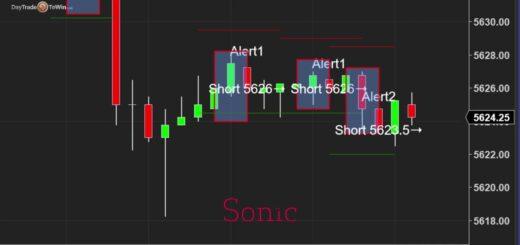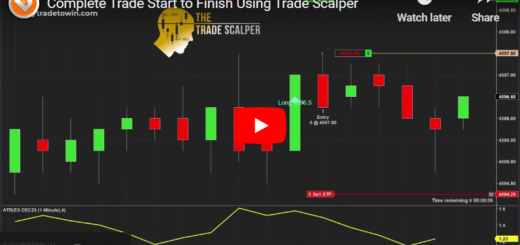Mastering ATM Strategies: Boost Your Day Trading Precision
Precision and timing are the foundation of successful day trading. Many traders struggle with issues like slippage, poor trade entries, and inefficient management, but by mastering key tools and strategies, you can avoid these pitfalls and improve your performance. One essential tool is the ATM (Automatic Trade Management) strategy.
Let’s explore how to effectively use ATM strategies alongside limit orders to gain an advantage in volatile markets.
Aligning Your ATM Strategy with ATR
The ATR (Average True Range) is a key indicator used to gauge market volatility. By aligning your ATM strategy with the ATR, you can respond more effectively to changing market conditions—whether it’s fast or slow. This means setting appropriate stop-loss and profit targets based on current market volatility.
To start, customize your ATM strategy by adjusting stop-loss and profit target levels to suit your trading style. For instance, in a volatile market, you might use a 20-tick stop-loss with a 10-tick profit target. This setup takes advantage of larger price swings, balancing risk and reward.
How to Customize Your ATM Strategy
Tailoring an ATM strategy to your needs is straightforward:
- Access the custom ATM settings.
- Set your risk and reward levels based on the ATR and market conditions.
- In a fast market, for example, you could set a 20-tick stop-loss and 10-tick profit target.
- Save this under a name like “20-tick 5.8 ATR” for easy selection later.
By creating multiple ATM strategies—such as setups for slow and fast markets—you’ll be able to quickly adapt to market changes.
Timing Your Limit Orders for Maximum Efficiency
With your ATM strategy set, it’s crucial to focus on limit order execution. Many traders wait too long to place limit orders, missing out on opportunities or entering trades poorly. The key is to place your limit orders in advance and adjust them as needed, based on market signals.
For instance, if you’re planning a short trade, place a limit order slightly above the current price. When the signal appears, simply adjust the order for a smooth execution with minimal slippage. By anticipating the market’s movement, you ensure that your order gets filled at the best possible price.
Using the Drag-and-Drop Technique for Quick Execution
One effective trick to speed up trade execution is the drag-and-drop method:
- Place a limit order far above (for a sell) or below (for a buy) the current market price.
- As the market nears your signal, drag the order to just below (for a buy) or above (for a sell) the price.
- Drop the order to ensure you get filled at the optimal price with no slippage.
This method saves valuable seconds, which are critical for day traders, and provides better control over your entry point.
Why Limit Orders Outperform Market Orders
Although market orders get you into trades quickly, they often lead to slippage—where your trade is executed at a less favorable price. This is particularly an issue in fast-moving markets. Limit orders guarantee you get filled at your chosen price or better, ensuring greater precision in your entries.
However, in rare cases where the market moves favorably while you’re distracted, it might be worth using a market order to lock in a better price. But in most cases, sticking to limit orders will yield better results.
Final Thoughts: Smarter Trading with ATM Strategies and Price Action
Mastering ATM strategies and limit orders, especially when combined with price action analysis, can significantly enhance your day trading results. Planning trades in advance and using tools like the Atlas Line, Trade Scalper, and ATR-based strategies can help you make more informed and efficient trading decisions.
Looking to elevate your day trading skills? Visit daytradetowin.com to create a free member account and explore trial access to advanced tools like the ABC software. Start learning to trade the right way using price action, without relying on conventional indicators.




